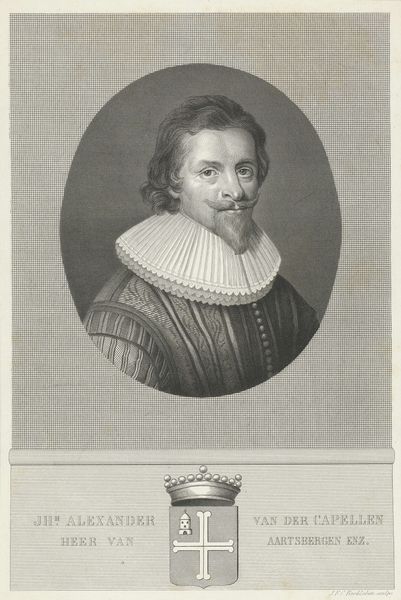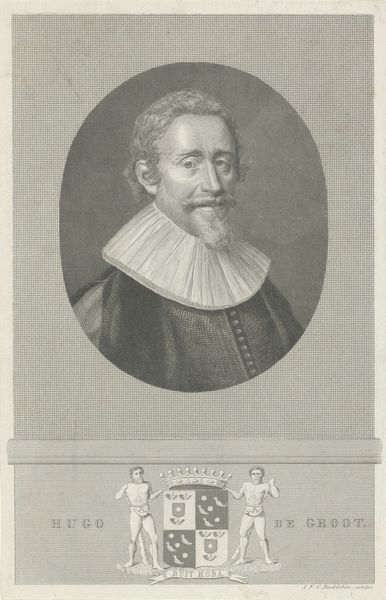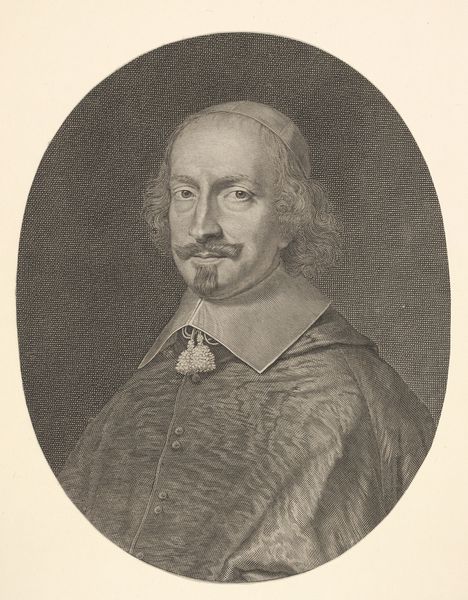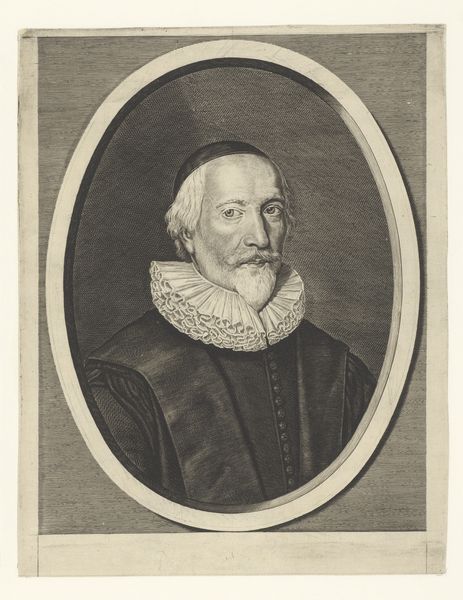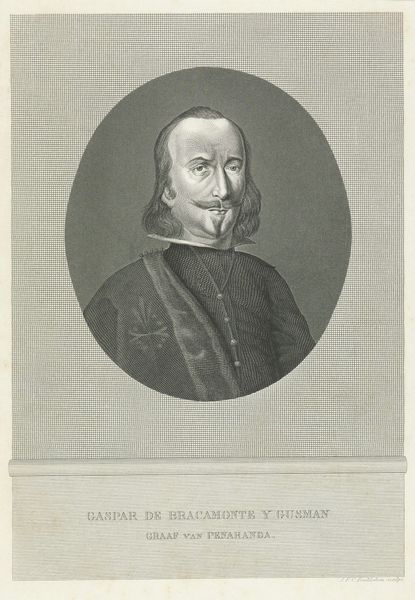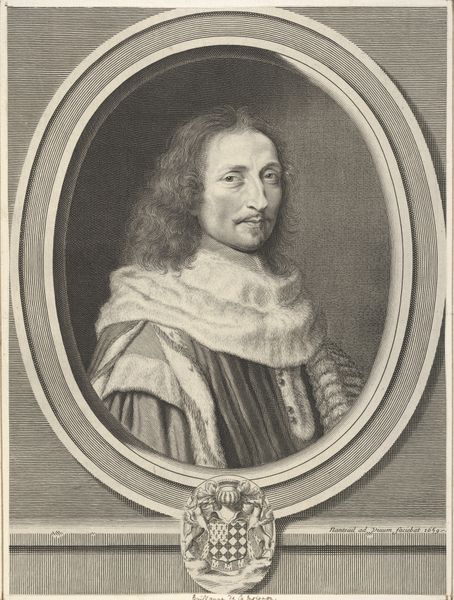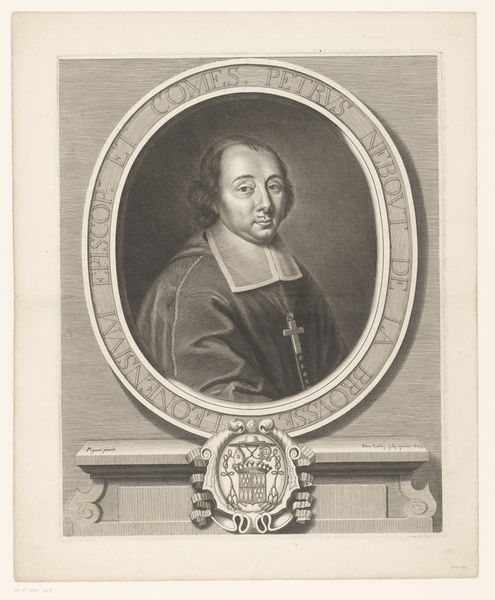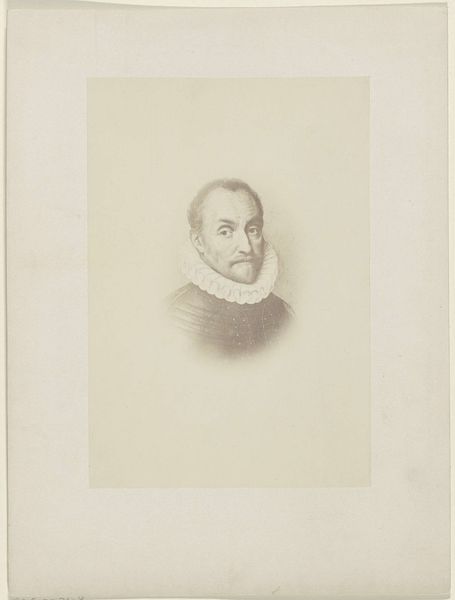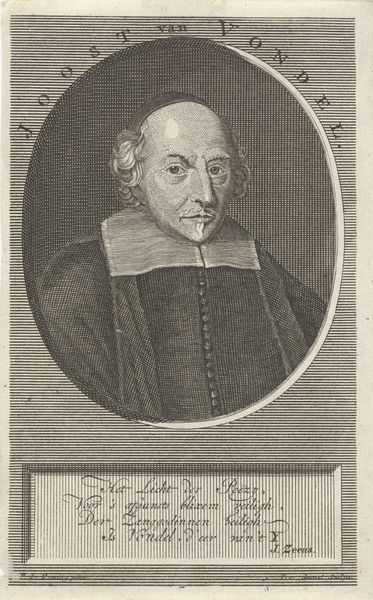
print, engraving
#
portrait
#
dutch-golden-age
# print
#
male fashion
#
historical photography
#
engraving
Dimensions: height 224 mm, width 149 mm
Copyright: Rijks Museum: Open Domain
Curator: The somber stillness radiating from this portrait is quite compelling. Editor: Agreed. Let’s dive into this striking print. We're looking at "Portret van Dirck Rafelsz. Camphuysen," created between 1858 and 1860 by Jan Frederik Christiaan Reckleben. The medium is engraving, providing a beautiful range of tonal values. Curator: The ruff immediately draws the eye, doesn’t it? It is so meticulously rendered—suggesting both status and, perhaps, a sense of formality bordering on restriction. In its circularity I also note it might signal both confinement and, simultaneously, defense. Editor: I appreciate that. It makes me consider the social position of Camphuysen and the constraints of that position. Dutch society in this era had clear hierarchies, visible in the material culture of dress and portraiture. How did Camphuysen navigate the societal expectations of his time, and what can we infer from the choice to immortalize him in this way, long after the Dutch Golden Age, in the mid-19th century? Curator: Consider the moustache as a visual signifier; it tells of the sitter's station within that world, but also suggests an interest in current fashions and worldly affairs. Editor: Fashioned expressions of class distinction that often mask deeper power dynamics, indeed! Curator: Yes, fashion becomes an extension of one's self, yet its adoption is equally bound by communal practices. As such, the work is more than just the tracing of an individual’s likeness— it becomes, instead, the record of his identity in time. Editor: It also hints at a negotiation of identity as situated in historical and social context, which brings up the interesting choice of Reckleben to portray Camphuysen posthumously, some two centuries after his subject lived. Curator: Well, as the Dutch Golden Age took on almost mythical importance during the nineteenth century, prints like this could function as attempts to revive those "glorious" past moments through vivid illustration. Editor: Right. They functioned as records, testaments of the cultural continuity which nations rely on. The cultural weight these visual representations held. Curator: Exactly. A lot to unpack in this seemingly simple portrait. Editor: Definitely offers a unique glimpse into how we connect with history through images and fashion, through artifice and meaning!
Comments
No comments
Be the first to comment and join the conversation on the ultimate creative platform.
